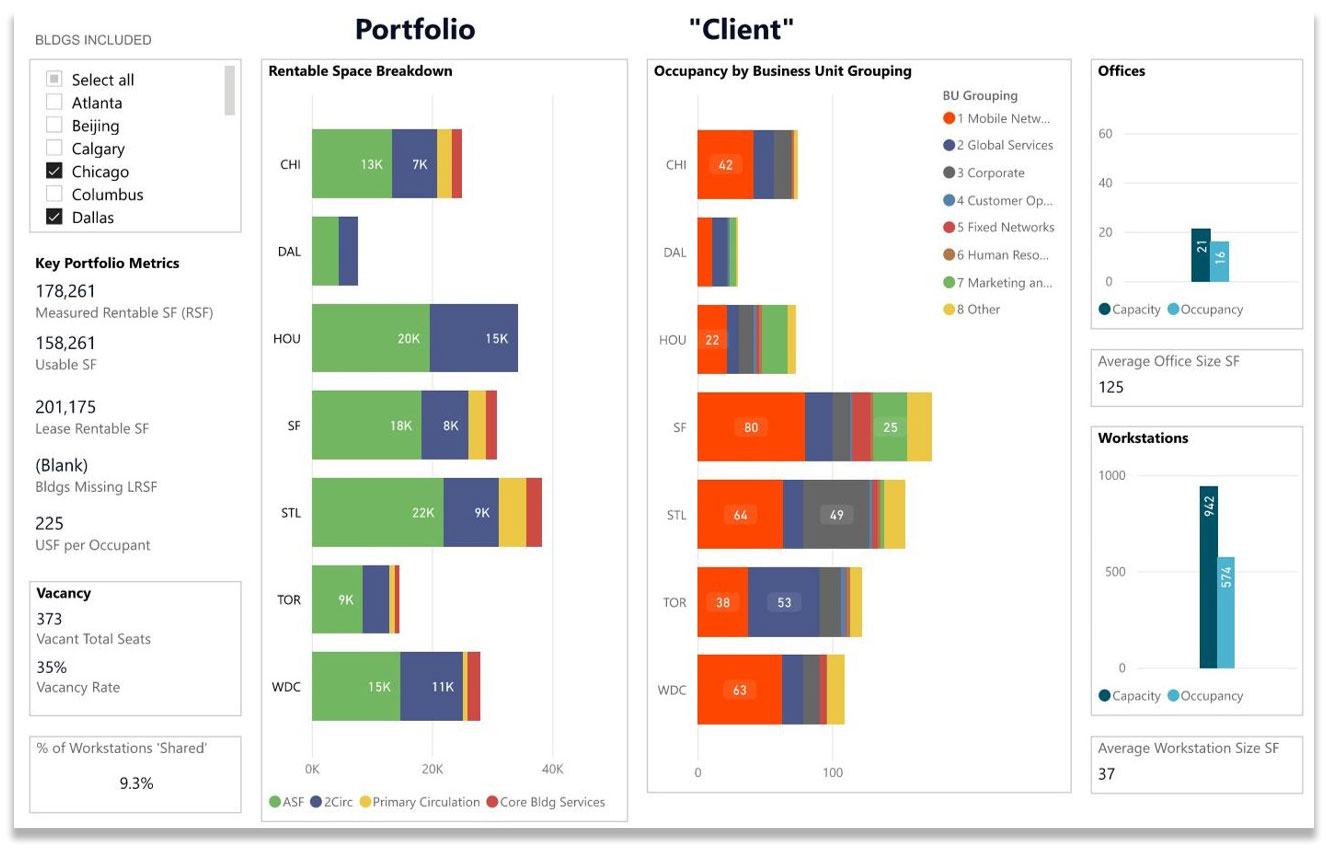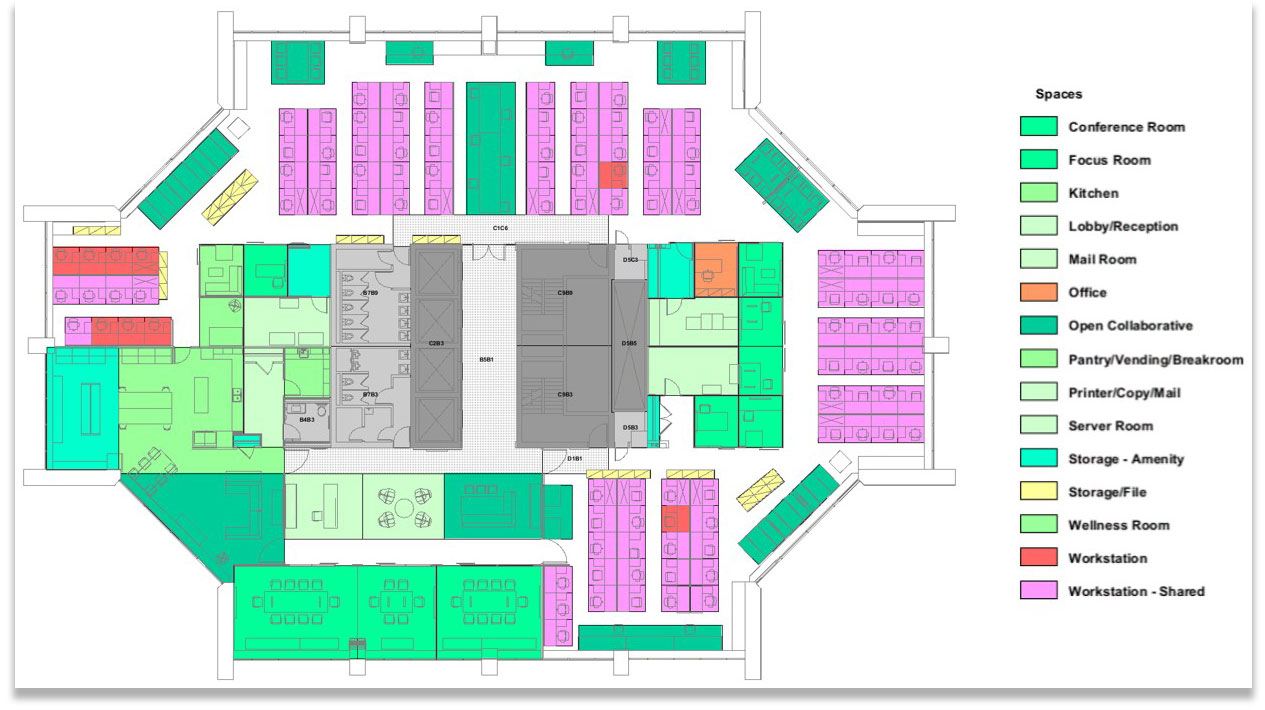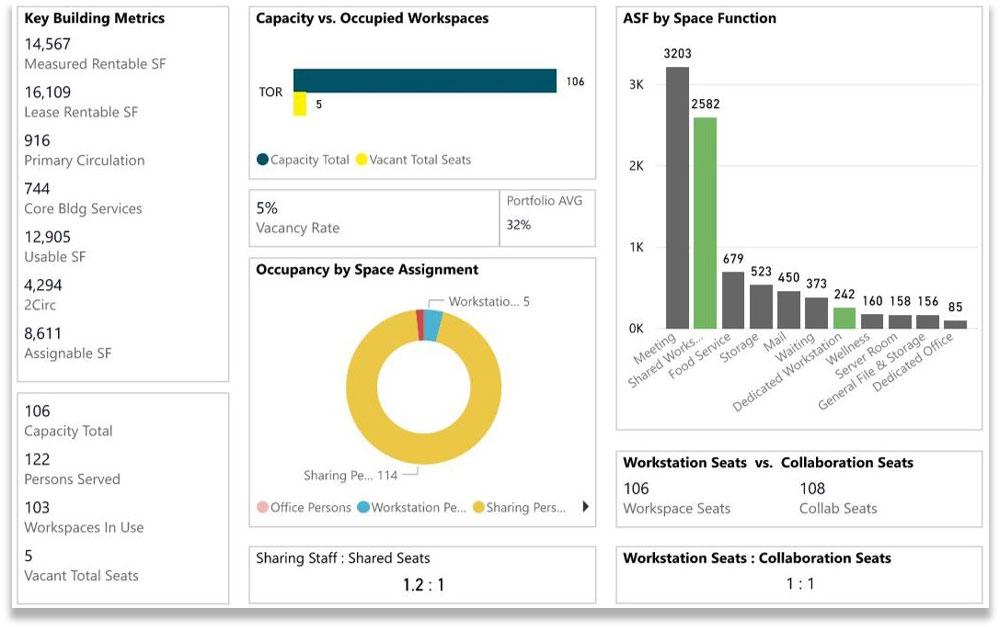A decision is only as good as the data that underlies it. That’s especially true today, as businesses use real-time and predictive analytics to prepare for an uncertain future.
Data insights are incredibly important to workplace strategists and planners helping companies examine how their current real estate portfolio will align with their post-pandemic needs. Unfortunately, many of the workplace decisions made today aren’t as sound as they could be because data driving those decisions is missing or flawed.
 The right data makes it easy to quickly compare properties across portfolios.
The right data makes it easy to quickly compare properties across portfolios.
The Cost of Inaccurate Real Estate Data
In working with Fortune 500 clients across the globe, HOK’s On-Site Space Management team has found that many firms miscalculate as much as 10 percent of the usable square feet (USF) within their real estate portfolio. Think about that for a minute. For a 5,000-7,000-person company with a portfolio of 1 million USF, a 10 percent miscalculation is like losing track of an area the size of an average Home Depot (100,000 square feet).
How can companies ensure that they are accurately tracking their entire portfolio? The answer lies in making sure drawing and data standards are part of your real estate management system.
 Accurate data can make workplace CAD drawings come alive with real-time details on space use.
Accurate data can make workplace CAD drawings come alive with real-time details on space use.
5 Protocols for Improving Real Estate Data
When incorporated together, the following five protocols can ensure companies have an accurate picture of their real estate and workplace holdings and how they are being used.
- Establish consistent and concise classification standards: Most organizations have between 25-50 truly unique space types. Yet these same organizations may have hundreds of different space types in their management system. A small serving area in the U.S., for example, might be labeled a ‘coffee station,’ while in the UK or Canada it might be called ‘tea point’ or ‘pantry.’ Elsewhere the space may be called a ‘servery’ or a dozen other names. Establishing portfolio-wide classification standards for all space types helps reduce duplication, confusion and inaccurate accounting.
- Create and maintain a glossary of standard terms: Once classification standards are established, the next step is to create a glossary so accurate and consistent terms can be applied across the portfolio.
- Develop CAD drawing standards: Define how all building and furniture information is captured and displayed within AutoCAD. This requires defining the layering protocol, the line sizes, title block and more so that all information is captured and displayed in a uniform way.
- Apply an accepted measurement standard: Measurement standards such as BOMA or IFMA define how polylines delineate space on a CAD floor drawing. Applying one standard across an entire portfolio ensures accurate USF calculations as polylines provide the bi-directional link to the space management database.
- Enable a repeatable process: Put in place the rules and steps to make changes to the drawings and data in your system. At the core of strong data governance is a clear understanding of how to manage information as it changes over time.
 Data visualizations take guesswork out of workplace planning—but only if the data behind them is reliable.
Data visualizations take guesswork out of workplace planning—but only if the data behind them is reliable.
When and How to Begin
For many companies, data standards and procedures are topics of conversation that come up every few years when it comes time to upgrade or replace an Integrated Workplace Management System (IWMS). But you needn’t wait for a new system to implement better data standards, especially considering how much you stand to gain from more reliable reporting.
Putting standards in place is just the beginning, however. The second step is to instill a culture of data integrity within an organization. This requires teams committed to following the data management protocols. Without this step, even the best standards won’t improve the accuracy and relevancy of the data. As a final safeguard, companies should also routinely audit their real estate data to confirm their standards are complete and—just as importantly—are being followed.
For more information on real estate planning and data management, including data standards and audits, visit our On-Site Space Management page or contact William Mitchell at william.mitchell@hok.com.